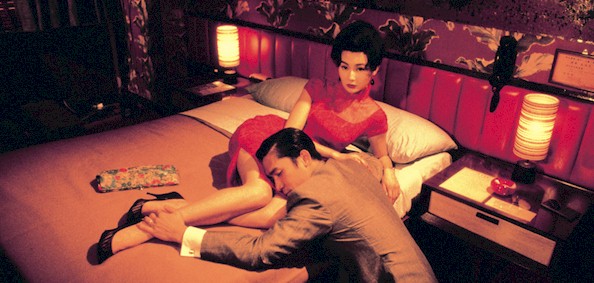*** (A Must See)

Vicky (Rebeca Hall) and Christina (Scarlett Johansson) disembark in Barcelona for a sunny summer stay with family friends Judy (Patricia Clarkson) and Mark (Kevin Dunn) Nash. Vicky is in Barcelona to further her postgraduate work on Catalan and the architect of Antoni Gaudí and Christina is there for love. Christina meets a well known painter in the arts community Juan Antonio (Javier Bardem). He is introduced at his nihilistic best; we find out about his devastating ex-wife who shot him, he is all by himself and he is looking gloomy drinking wine. The two girls go on a weekend trip in Rhiota with Juan Antonio where Christina accidently gets sick. Hesitantly Vicky goes out with Juan and they indulge in beautiful Catalan wine, cuisine, classical guitar to accompany private intellectual and emotional conversations. Maria Elena (Penélope Cruz) returns and gets back together with Juan Antonio just as a blooming relationship with Christina is emerging. The film contrast the relationships of the two leads Vicky with her stable and secure relationship with an Allen prototypical New York intellectual Doug (Chris Messina) and Christina with her spontaneity and excitement in her love affair with Juan Antonio and Maria Elena. Underneath it all there is a study of compromise in relationships, everyone has their own regrets and desires that are fulfilled or neglected. As Vicky is trying to come to terms with her shrewd night with Juan Antonio the film meditates on fleeting joyful encounters and concealing sadness with alleged cheerfulness. Woody Allen has always been trying to combine the froth with the serious and this film offers many of pleasures that are reminiscent of his good old days. The cast is gorgeous, cute, beautiful, sexy, and sells itself but what makes the film so much greater are the hilarious wisecracks; Great, just what we needed a Rorschach blotch.
Vicky Christina Barcelona is Woody Allen's the latest film from his prolific career as a writer-director that started in 1969 with his directional debut Take the Money and Run. His last feature to show in Ottawa was Scoop (2006). "Well, Scoop I found to be a trivial little Kleenex of a film..." Woody Allen proclaimed in a recent interview with The Village Voice. Cassandra’s Dream (2007) did not even make it to repertories in Ottawa. Point is: Vicky is the best Allen you can get. Vicky Christina Barcelona will be playing at the AMC and SilverCity and more comfortably at the Bytowne in October. To get ready for the Bytowne premiere their playing, my favorite Woody Allen film, Manhattan (1979) on September 23rd and 24th. If you still want more his next film Whatever Works is scheduled for release next year and will be starring Seinfeld and Curb Your Enthusiasm creator Larry David and if your going to be in Los Angeles next summer he will be directing his first ever opera Puccini’s Gianni Schicchi.-David Davidson
(Bytowne Cinema, 324 Rideau Street, 10/02-10/05)

